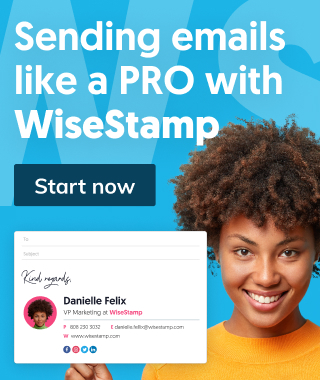7 top lead generation tips for beginners 2022
Learn the best lead-generation tips to lay the groundwork for an effective lead-gen machine that will sustain your business and drive growth for years to come.

If you’re selling products or services to other businesses, then you’re likely to see very few sales from first-time website visitors. That’s why it’s so important to capture leads, so you can follow up with people and build relationships with them over time.
But even solopreneurs who know how to brand themselves well, attract an audience, and capture plenty of leads often struggle to nurture those leads effectively and close sales.
Let’s take a look at some unconventional ideas for lead nurture tactics to help maximize your conversion rates, so you can increase your profits.
1. Research Your Leads to Determine Fit
Research each of your leads to determine their potential fit or lack thereof. You can look them up using use market research tools like SimilarWeb, aHrefs, and others, you can sift through their social media channels, and go over their website, and other online assets. You can even find information on B2B leads from Google Maps.
Look them up on social media, to find out more about who they are and how well the product or service you’re offering is likely to fit their needs. This way, you’re not wasting time on leads that won’t convert, because you don’t offer exactly what they’re looking for.
Even if you did manage to convince someone who’s a bad fit that they should do business with you, there’s no way that they’ll stay with you for very long. They’re likely to resent you in the end, too, and they might tell their peers about that. This is why lead qualification is so important.
There are some great tools available that can help you with automated “lead enrichment” data. But if you’re just starting out, you’re probably looking at a small enough workload to justify taking five to 10 minutes to snoop around on your own.
Plus, the research will help you find the best angle to approach them throughout the nurturing process to increase the chances of conversion. Creating a landing page for capturing conversions is also a smart strategy.
Check the information the lead provided in your contact form. Many may offer a false phone number to avoid getting a phone call, but that doesn’t mean the email is false.
Remove any records where contact methods don’t work. Check your CRM to make sure someone else on your team isn’t already working with the lead. Visit the company website. If there’s no website, search the company in Google or LinkedIn to verify their existence. This step ensures the legitimacy of your lead.
2. Keep in Touch – Without Pitching
Part of the lead nurturing process involves staying in touch of course, but if you’re constantly pushing your sales pitch, people will start to ignore you. They will buy when they’re ready to buy, so the best thing you can do is provide useful information to them. You’ll not only establish credibility in your niche and become a trustworthy source for your leads, but you’ll show them you care about their business interests, rather than just the money in their pockets.
Stay in touch with email automation, encourage engagement on social media, and drop them quickly, personalized notes every now and then.
Make sure to send them relevant blog posts, and perhaps most importantly, curate content from other sources that your audience will also find useful. Make sure you don’t exclusively share content published on your owned properties, even if you’re not focused on the sale. It will seem like all you’re doing is talking about yourself, which will turn customers off.
3. Move the Conversation from Channel to Channel
The more channels you can use to connect with your leads, the better. The multichannel approach puts your customers in control because it allows them to choose the places where they want to interact with you. And because you’re in multiple places, you’re ready to engage with them no matter where they choose to engage with you.
Of course, the multichannel customer experience comes with its own set of challenges. It contributes to the feeling that you have to be everywhere all the time. And yes, while you need to be in more than one place, you don’t have to be everywhere.
If your customers aren’t on Snapchat, skip it. If they are on Pinterest, you should be there, too. HubSpot’s data shows that 95% of Millenials, 87% of Generation X’ers, and 70% of those aged 45 to 60 expect brands to be on Facebook, so at the very least you need to be communicating there and via email.
Your email signature can be a great source of traffic – and a great way to promote your various social presences – but who wants to take the time to change the links in the signature all the time?
Beyond using standard links to your social media, you can use WiseStamp to include dynamic links in your signature. Aggregate your latest Facebook status, tweet, blog post, and more, automatically. Whenever you update your social media statuses or blog, the link will automatically change to the most current option.
4. Pay Close Attention to Available Signals
Dive into all your analytics and available data sources to determine where your leads are in the sales funnel at any given moment. Knowing where a lead is will help you determine your engagement messaging accordingly.
You could just use a blanket messaging approach for everyone in your CRM, but that would mean ignoring a major opportunity to maximize messaging relevance. Segmenting your leads allows you to craft a strategy that will drive the most conversions.
Optimizing your Google Analytics setup for tracking funnel progress across marketing channels can help a great deal. You can even create custom audiences from your lead data on Google AdWords and various social media networks, to allow you to advertise directly to your leads on those platforms, as a form of funnel position-specific remarketing.
On LinkedIn, you can upload a list of up to 30,000 companies, which allows you to target ads to those companies’ employees. You can then further refine your audience using more parameters, like age, geographic location, gender, and job title.
On Facebook, Pinterest and Twitter, once you upload your email list segments to the ads platform, the ad engines will match the email addresses to their account owners, and you can then book ads targeting these people. On Twitter, you can also choose to upload mobile phone numbers.
You can use this to increase your follower count with a promoted accounts campaign or deliver targeted messages to segments with promoted tweets.
Using the Facebook and Pinterest tracking pixels, you can even serve ads to people who have visited certain combinations of content pages on your site but haven’t yet opted in to your email list. Facebook, of course, offers the most sophisticated options for B2B ads that take audience intent signals into account.
7. Send Smart, Automated Follow-Up
Automation is key, but going completely automated removes the human element from your business that you desperately need if you want to make connections and build real relationships with your leads.
So, rather than automating every aspect of your marketing, focus on automating the follow-ups, so you can spend your available time actually engaging with your leads and customers.
When to send the follow-ups depends highly on your business, so there’s no one size fits all approach. In eCommerce, for instance, it makes sense to send an automated follow-up when someone abandons his or her shopping cart. If you are selling a service, using automatic proposal software can also help you close more leads into clients.
It also makes sense to send an automated follow-up after an order arrives and they’ve had time to use the product, asking for reviews and feedback. This approach can be highly effective for B2B situations as well, and it can even help maximize retention rates.
Wrapping it Up
Ultimately, closing more leads is only possible when you’ve done everything you can to optimize your digital footprint for lead capture, lead nurture, and experiences that delight audience members.
You must have a product or service that’s quality, and it must be positioned to meet the needs of your target audience. You must provide stellar content on your blog and social channels, and you must be sure you’re targeting the right leads in the first place.
If any of these elements are off, you’ll struggle to close deals no matter how well you’re doing at nurturing them.


